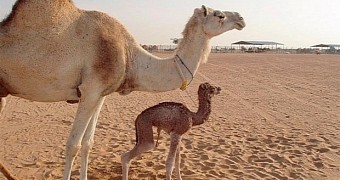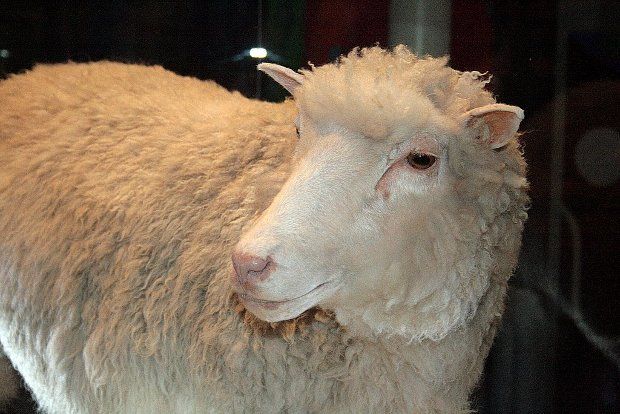At a first glance, Injaz looks just like any other camel. Still, the fact of the matter is that there is a very good reason why its name is the Arabic word for “achievement.” Injaz is a clone. More precisely, it is the world's first cloned camel.
The animal celebrated its 6th birthday earlier this week. Apart from the fact that it is perfectly healthy, the scientists who created it are pleased to announce that Injaz is pregnant with its first offspring and will deliver sometime later this year.
Injaz's pregnancy is proof that cloned animals can be fertile and reproduce. More so given the fact that, according to scientist Nisar Wani with the Reproductive Biotechnology Center in Nad Al Sheba in Dubai, Injaz conceived naturally.
“Injaz is now pregnant and we expect to have a calf from her late this year. She has conceived in a natural way,” the researcher said. “This will prove cloned camels are fertile and can reproduce the same as naturally produced camels,” he added, as cited by The Inquisitr.
Presently, there are no signs that Injaz might be struggling with her pregnancy. On the contrary, both the cloned camel and its unborn calf appear to be in perfect health condition. The specialists monitoring them promise to keep us updated on their progress.
Injaz was cloned from a slaughtered camel
The 6-year-old animal was cloned from cells taken from the ovaries of a camel that was slaughtered back in 2005. That's right, the camel that donated the cells from which Injaz was engineered died 4 years before its copy was born.
To create Injaz, scientists transferred genetic material from the cells obtained from the slaughtered camel into an egg taken from another animal. The egg accepted the new DNA and, with a little help from scientists, grew to become an embryo.
The cloned camel developed in the womb of a surrogate mother. Shortly after it was born, scientists tested its genetic profile and found it to be identical to the one of the camel that was slaughtered in 2005, just as was expected.
Injaz was born following a gestation period of 378 days. During this time, neither young Injaz nor its surrogate mother experienced any health complications. When delivered on April 8, 2009, the camel weighed precisely 66 pounds (30 kilograms).
In recent years, scientists have cloned all sorts of animals, mice, pigs, cows and dogs included. The world's first cloned animal was Dolly the sheep, born 19 years ago. Unfortunately, Dolly had to be put to sleep in 2003 after being diagnosed with lung cancer.

 14 DAY TRIAL //
14 DAY TRIAL // 

